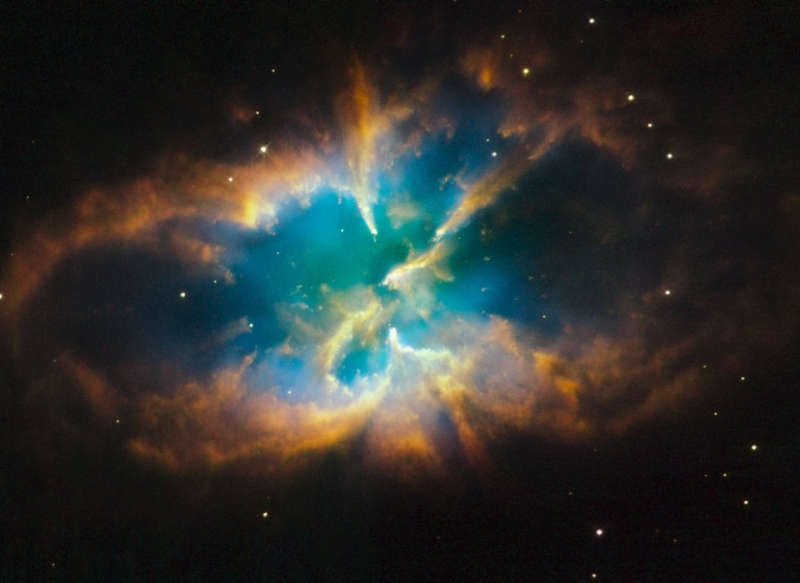Planetary Nebula NGC 2818 from Hubble

Explanation:
NGC 2818 is a beautiful
planetary nebula,
the gaseous shroud of a
dying sun-like star.
It could well offer a glimpse of the future that
awaits our own Sun after spending another 5 billion years or
so steadily using up hydrogen at its core, and then finally helium, as
fuel for
nuclear fusion.
Curiously,
NGC 2818 seems to lie within an open star
cluster, NGC 2818A, that is some 10,000 light-years distant
toward the southern constellation
Pyxis
(the Compass).
At the distance of the
star cluster, the nebula
would be about 4 light-years across.
But accurate velocity measurements show that the nebula's own velocity
is very different from the cluster's member stars.
The result is
strong evidence
that
NGC 2818
is only by chance found along the line of sight to
the star cluster and so
may
not share the cluster's distance
or age.
The
Hubble image is
a composite of exposures through narrow-band filters,
presenting emission from
nitrogen,
hydrogen, and
oxygen atoms
in the nebula as red, green, and blue hues.
Authors & editors:
Robert Nemiroff
(MTU) &
Jerry Bonnell
(USRA)
NASA Web Site Statements, Warnings,
and Disclaimers
NASA Official: Jay Norris.
Specific
rights apply.
A service of:
LHEA at
NASA /
GSFC
& Michigan Tech. U.

